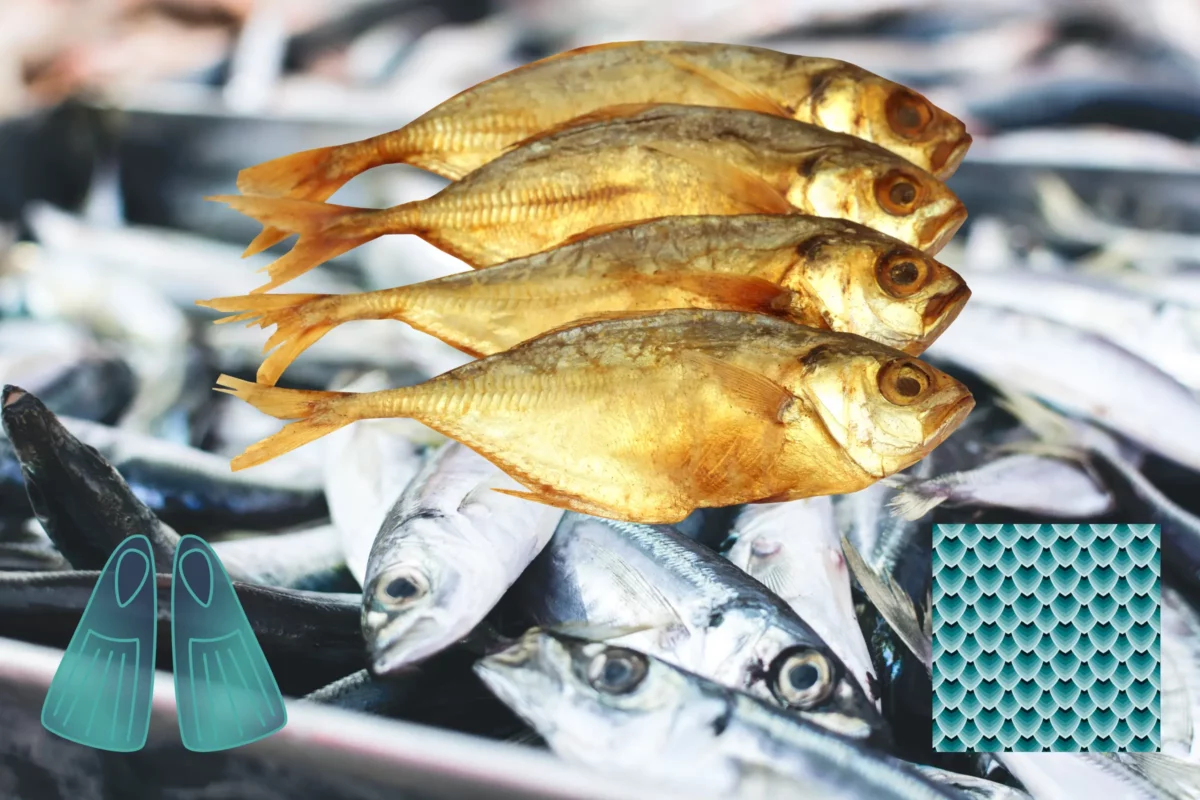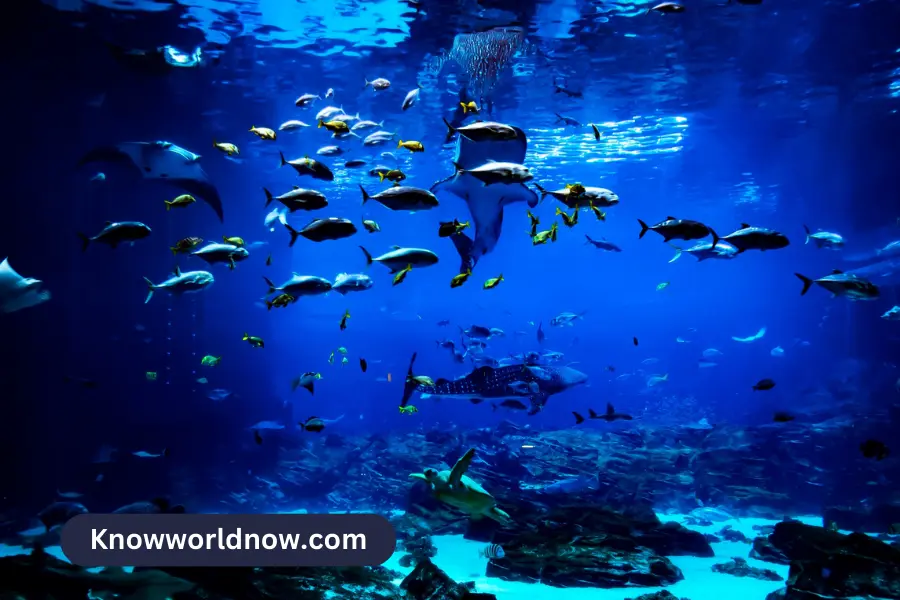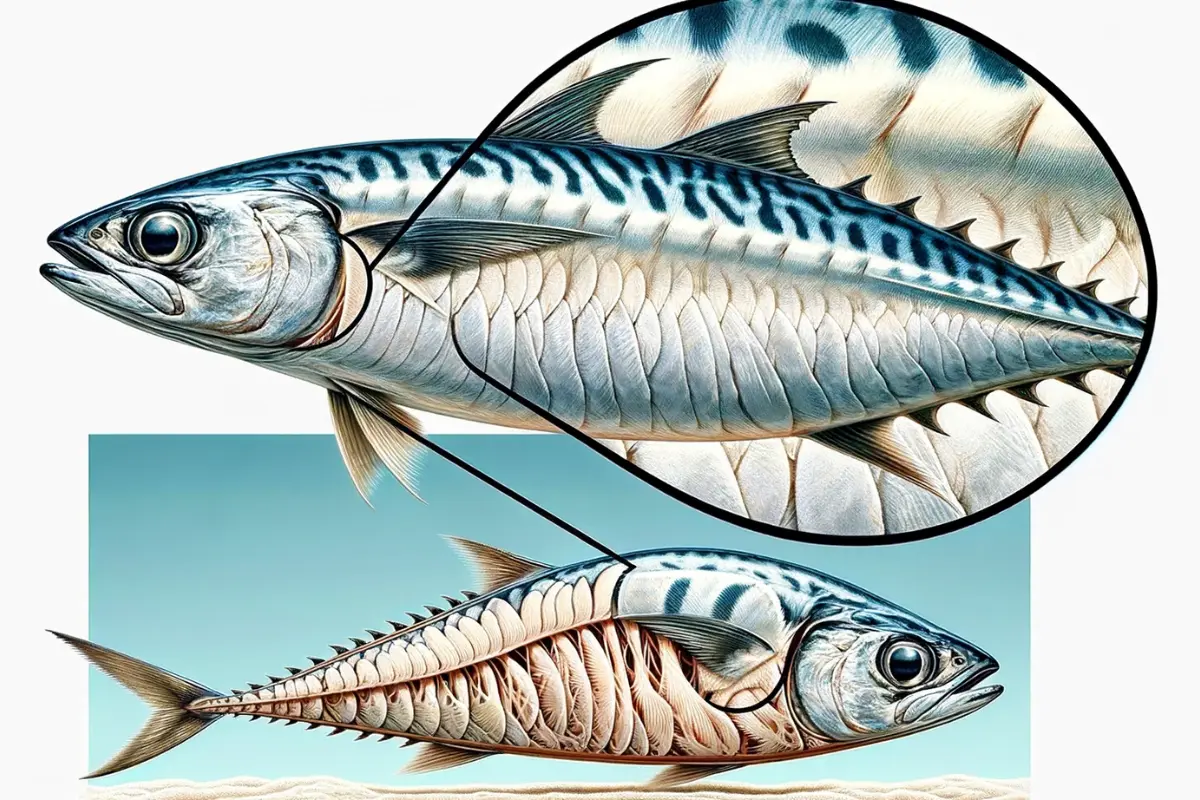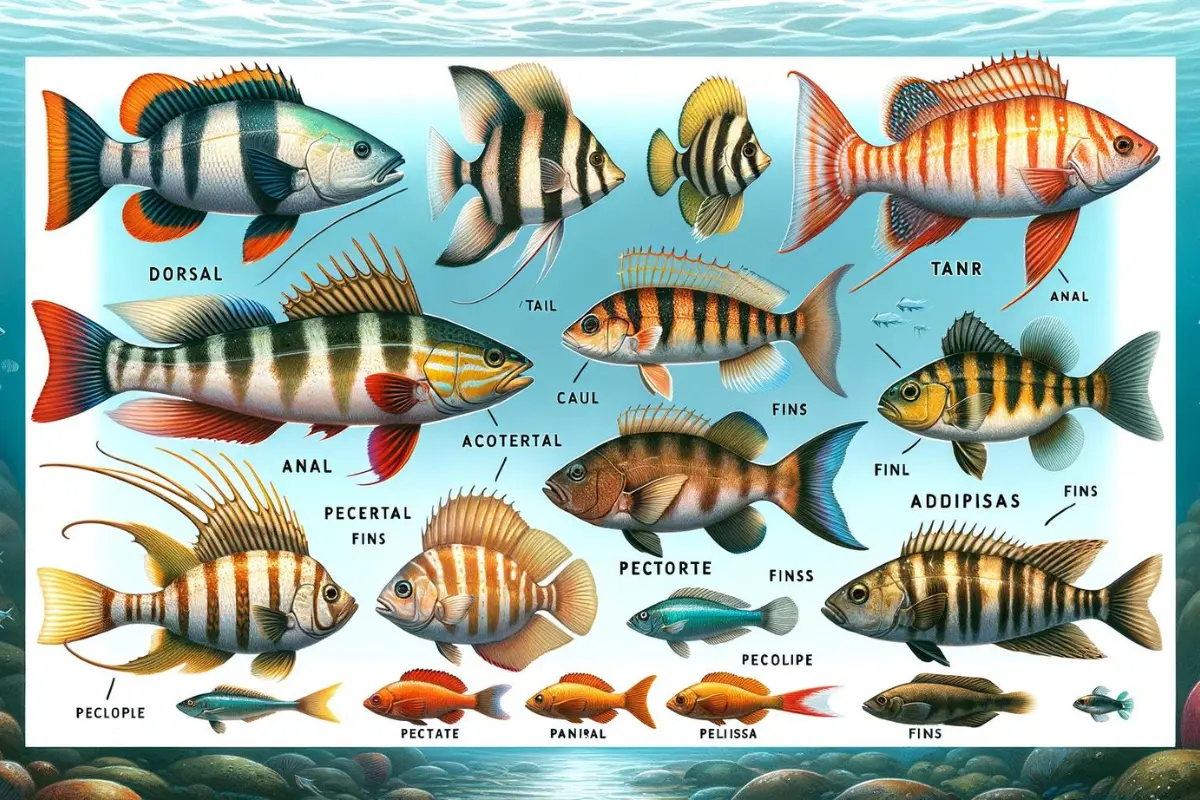Sardines have both fins and scales. This small fish has five types of fins and silver-colored scales on their body. They do not have any scales on the head, and the dorsal fin does not contain any spine. Both fins and scales are important body parts for Sardines.
Sardines use their fins for different purposes. The primary purpose is to swim and change directions with convenience. Additionally, the fins help them maintain their body temperature to adjust to the environment.
Scales add a protective layer covering the delicate and soft body of the fish. These scales also help them swim underwater and play an important role in their survival.
Types of Fins in Sardines and Their Benefits
Sardines have five different types of fins, and all of them are unique. This makes it easy to recognize fish. Let’s see what roles the fins are assigned to.
1. Dorsal Fin
The dorsal fin is the one that is located on the back of a fish. Like many other kosher fish, sardines also have a dorsal fin. The fin is small and does not have any spine. It makes the fin more flexible despite the small size. The fins have several responsibilities, for instance:
- The dorsal enhances stability during swimming and prevents rolling and tipping
- Sardines use their dorsal fin for effective navigation.
- Despite their small size, sardines can swim quite fast. They use the dorsal fin for this. The fin reduces water resistance and optimizes the fish’s speed and agility.
- Fish metabolism and internal activities are interconnected. Different body parts, including the dorsal fin, work with other organs to maintain the ideal temperature for them.
2. Anal Fin
You can find the anal fin of sardines near the anal. It is quite a small fin but still has several responsibilities.
- The anal fin also provides stability during swimming. It counterbalances dorsal fins to ensure the fish can stay in balance.
- The navigation of sardines requires cooperation and symphony among all the fins. That makes anal fin also responsible for keeping them stabilized.
- Sardines leverage their anal fins for quick and agile movements. This fast movement is crucial for evading predators.
3. Pectoral Fin
The pectoral fins of sardines are positioned on each side of the fish. You may not notice them at once as the fins are behind the gills.
- The primary role of pectoral fins is similar to the steering of your car. These fins help them change the direction
- Sardines use the pectoral fins to brake during swimming. They adjust the position of the fins to put a halt to their movement.
- Additionally, pectoral fins also take part in maintaining balance, maneuverability, and stability.
4. Pelvic Fins
Pelvic fins are a pair of fins you will notice on the lower side of sardines. These fins are small, but they are important for proper stabilization and navigation. These fins coordinate with other fins to maintain the ideal balance so that sardines can swim, feed, and survive.
5. Caudal Fins
The caudal or tail fins are a very common organ for all kinds of fish. The fin is located at the posterior end of sardines. This fin has many roles to play.
- The caudal fin is the primary means of propulsion for sardines. It helps them swim forward through the water with powerful thrusts.
- Sardines usually have forked or deeply forked tails. This shape influences their speed by offering them more agility in open water.
- The fin helps reduce the water drag and turbulence. It promotes energy-efficient swimming over long distances.
Benefits of Having Scales for Sardines
Sardines have cycloid scales. The primary feature of this type of scale is that they are smooth and round with a concentric ring pattern. Scales offer sardines numerous benefits, for example:
- The overlapping scales create a protective layer over the delicate skin. It saves them from parasites and bacterial infections.
- Scales help sardines maintain an optimal body temperature in different water conditions.
- Scales help sardines withstand the water pressure and water drag during swimming. It helps them swim conveniently with more speed and waste less energy.
Can You Eat Sardines?
Sardines are popularly consumed in different parts of the world. They have a delicious taste that makes them the favorite choice of many people. This small fish is not only tasty but also beneficial for your health. Have a look at the food value of sardines:
| Nutrient | Amount |
| Calories | 191 |
| Saturated fat | 1.4 gram |
| Protein | 22.6 grams |
| Sugars | 0 grams |
| Carbohydrates | 0 grams |
| Vitamin B12 | 16.6 micrograms (mcg) |
| Vitamin B6 | 0.226 |
| Vitamin D | 8.83 mcg |
| calcium | 442 mg |
| iron | 4.23 mg |
| potassium | 627 mg |
| selenium | 74.7 mcg |
| phosphorus | 673 mg |
Health Benefits of Eating Sardines
Sardines are a good addition to your diet. Here are the benefits you can enjoy from eating this fish.

1. A Good Source of Protein
Protein is an important nutrition that your body needs to stay healthy. It is often referred to as the building block of your cells. The absence of protein can result in various health problems. It boosts your immune system, enzyme function, and hormone production. Additionally, protein can help your muscle structure and body function.
2. Contains Minerals
Your body needs minerals for different reasons. You need calcium, phosphorus, and other minerals for strong bones. Mineral deficiency can affect bone density and cause osteoporosis. Thankfully, sardines contain different minerals and are ideal for people who suffer from a lack of minerals. Sardines are a delicious option for you to meet the mineral requirements of your body.
3. A Good Source of Vitamins
Sardines offer you various types of vitamins, including vitamin B6, B12, and vitamin D. These are crucial nutrients for your health. Vitamin B12 is crucial for your health as it plays a role in the synthesis of DNA and red blood cell formation. The vitamin is also involved in the metabolism of fatty acids and amino acids.
Vitamin B6 boosts your immune system and protects you from different diseases. Additionally, it regulated hormone production and neurotransmitter production. Vitamin D contributes to your cell growth, bone health, muscle function, and mood regulation.
4. Lower Intake of Mercury
An issue with consuming fish is the presence of mercury in them. Considering the presence of mercury, you can say that sardines are the safest fish. It contains the lowest amount of mercury among all other fishes. The lower level of mercury makes the fish a top choice among many seafood lovers.
What Other Fishes Have Scales and Fins?
Fins and scales are common among fish. You will find thousands of examples of such fish. Here is a list of well-known fish with scales and fins.
| Trout | Tuna |
| Salmon | Mackerel |
| Perch | Bass |
| Cod | Walleye |
| Grouper | Snapper |
| Catfish (some species) | Haddock |
| Mahi-mahi | Tilapia |
| Redfish | Yellowtail |
| Pompano | Bluefish |
| Barracuda | Sea bream |
| Red snapper | Wahoo |
| Swordfish | Pike |
| Kingfish | Flounder |
| Herring | Anchovy |
Are There Fish Without Fins and Scales?
While most fish have fins and scales, some fish do not have them. Check the below list to see the fish that do not have fins and scales.
| Lamprey | Mudskipper |
| Blind Cavefish | Hagfish |
| Parasitic Catfish | Jellynose Fish |
| Snakehead Fish | Ocean Sunfish |
| Barbeled Dragonfish | Eel |
| Anglerfish | Smooth Dogfish Shark |
| Sea Devil | Slickhead |
| Ratfish | Cusk Eel |
| Dragonfish | Viperfish |
FAQ
Are sardines clean fish?
Yes, sardines are clean fish. They are small, oily fish with fewer contaminants than larger species. They have low mercury and high omega-3 and offer many other health benefits.
Are sardines kosher fish?
As sardines have scales and fins, it makes them a kosher fish. A fish needs to have both fins and scales to be considered kosher. Though sardines do not have scales on their heads, they have them on their body.
Are canned sardines bony?
You will have canned sardines, both with and without bones and scales. Many people find it more convenient to have canned sardines without bones. However, the bones of sardines are completely safe to eat.
How do you remove scales from sardines?
You can use a tool like a fish scaler or the back of a knife to scale sardines. You need to hold the fish firmly and scrape the scaler or the back of the knife against the scales. Start from the tail and go towards the head for quick scaling.
Do you remove the spine from the sardines?
It depends on your personal preference. Many people do not remove the spine during preparation. You can grill or cook the sardines with the spine. The spine adds structure and flavor to the fish. You can easily remove the spine after cooking them as well.
Is it OK to eat sardine skin?
Yes, it is safe to eat the skin of sardines, and it contains valuable nutrients. The skin is thin and becomes crispy after you cook them. Fried skin adds a crunchy texture to your food. The low intake of mercury makes them safe to eat.
Can you eat sardines with scales?
The scales of sardines are usually soft, and so are edible. The smaller the fish size is, the softer the scales are. Even the biggest sardines’ have comparatively soft scales. People often cook and eat them without scaling the scales.
Conclusion
Sardines have both fins and scales, and these organs and body parts are crucial for them to survive. They use the fins to maintain balance and stability. The scales protect them from parasites and other threats. You can eat the scales, and the fish itself is healthy and nutritious.







